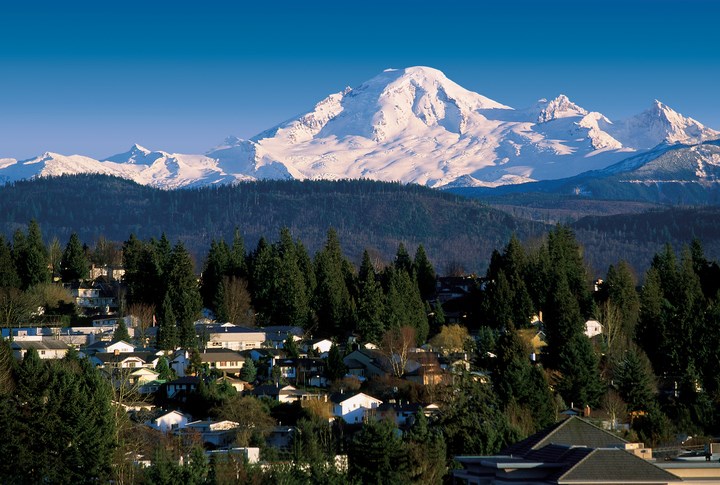Many Metro Vancouverites may think of Abbotsford as a sleepy suburb, too far east to be relevant and too agricultural to attract bright young professionals. But think again.
Abbotsford is a hot, hot, hot real estate market – and likely getting hotter. It has been seeing a huge amount of ripple effect from the larger cities to its west, as prices have pushed home buyers into more affordable areas. It also attracts residents with a number of advantages such as its own international airport (which saw record passenger figures in 2016) and close proximity to the US border.
But more than that, Abbotsford is a rapidly developing region in its own right. Having seen sharp GDP growth over the past few years, the region’s GDP is predicted by the Conference Board of Canada to continue rising (albeit at a slightly slower pace) by 2.3% in 2017. This still puts the city in the top three among the 15 medium-sized Canadian Census Metropolitan Areas surveyed in The Conference Board of Canada’s Metropolitan Outlook: Summer 2017.
“Abbotsford-Mission’s economy is expected to expand more slowly, in line with the provincial economy this year. However, growth is still forecast to be solid thanks to strong performances in manufacturing and construction,” said Alan Arcand, associate director of the board’s Centre for Municipal Studies. “The finance, insurance and real estate industry will also perform well this year and next, as prospective Metro Vancouver homebuyers take advantage of Abbotsford-Mission’s relative affordability.”
The City of Abbotsford’s “Abbotsforward” Official Community Plan anticipates a future city of 200,000 people and plans to focus 75% of new growth by densifying neighbourhoods, rather than outwardly sprawling new areas. It envisions an innovative “city of centres”, including a main City Centre, several Urban Centres and lots of Neighbourhood Centres, based around sustainable transport.
Thecouncil is also seeking to unfreeze agricultural land for future industrial use to make way for increased economic activity. Abbotsford-Mission’s manufacturing industry expanded by 9% in 2016, marking its largest annual gain since 2000, according to the Conference Board of Canada.The board added in its report, “We expect the region to add close to 3,600 new jobs over 2017-18, following stagnant gains last year. This should help drive the unemployment rate down from 6.5 per cent in 2016 to 5.6 per cent by next year.”
Prices rising
So the Conference Board of Canada and the city council certainly seem bullish about Abbotsford’s future. And so do local residential developers, if recent land deals are anything to go by. One 19-acre parcel of land with multi- and single-family-home potential sold recently for $16 million, nearly $850K per acre and nearly $6 million above its most recent assessed value. As for upcoming residential projects, they are limited in number, but sales are proceeding apace at new developments such as Mill District, a two-building complex of 82 contemporary townhomes and condos.
Local home buyers have already clued in on Abbotsford’s potential, and the rising demand has seen the median price of an attached resale home (condos, townhomes and other attached properties) rise 44% since January 2015 (see graph below) and increase 22% year over year since July 2016.
The great news for investors, however, is that this median attached home price started at a very low base and is still just $275,000 as of July 2017. This is around half the price of an attached home in Greater Vancouver.
Rents stack up
Rents, on the other hand – while lower – are not half those of Greater Vancouver. So the math stacks up nicely in Abbotsford for a residential investor.
For that $275,000 you could get a two-bed, two-bath, 1,000-plus-square-foot condo like this one currently listed in central Abbotsford, close to the University of the Fraser Valley campus. Put 35% down (typical for an investment unit) and, assuming you bought it for list price, your monthly payments would be $826, plus another $300 for strata fees and property taxes. Since you can easily rent that unit out for $1,200, maybe even $1,400 a month (check out comparables on Craigslist) , you’re comfortably cash-flow positive.
And rents are going up and up. The average rent in 2014 was $835 a month, rising to $864 in 2015 and $915 in 2016, according to the CMHC. Its 2017 figures will be released in October but rents have rocketed over the past year.
That’s great, but what about vacancy rates, right? Surely they are way looser than in Vancouver, and you’re much more likely to have a unit sitting empty? Wrong. Abbotsford’s rental vacancy rate matches Vancouver’s at a super-tight 0.5% as of October 2016, having dropped from 3.1% in 2014 and 0.8% in 2015.
Abbotsford may seem like the far east to Vancouverites, but it could be where the smart money is.



